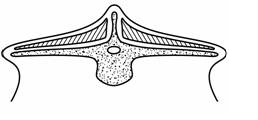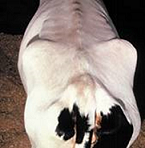Body condition scoring for dairy cattle
Body condition scoring is the visual evaluation of the amount of muscle and fat covering the bones of an animal. It is a very useful tool to monitor feeding management by providing a subjective estimate of the amount of muscle and subcutaneous fat between the pin bones and the tail head, over the hip and covering the lumbar vertebrae.
Body condition score can be assessed independently of live weight, gut fill and pregnancy status of the animal.
Why body condition scoring is important
- Body condition affects milk production and reproductive performance.
- Enables farmers to compare the condition of their cows with recommended targets.
- Knowledge of condition scoring then enables farmers to manage their feeding programs better.
Body condition score increases when energy intake exceeds energy output and decreases when energy output exceeds energy intake
- For an overweight cow, there is a risk that around the time of calving and in early lactation, she will consume too little feed.
- A thin cow has a poor immunity against disease.
- Sharp falls in condition may also lead to fertility problems e.g. poor or non-existent heats.
Body condition scores can is based on a system ranging from score 1 to score 5. The spine is assessed over the lumbar vertebrae; The transverse processes are the horizontal parts of the lumber vertebrae; The pin bones are the bones on either side of the tail head.
Score 1. Very poor Very thin
- Spine looks like teeth on a saw
- Transverse processes prominent with more than half the length visible
- Pin bones are very prominent, with a deep V shape cavity below the tail head and no fatty tissue under the skin
|
|
|
Score 2: Moderate Skeleton clearly visible
- Individual vertebrae can be identified on the spine
- Transverse processes are ½ to 1/3 visible with the ends rounded and can be identified individually
- Pin bones are prominent with a U cavity below the tail head and some fat under skin
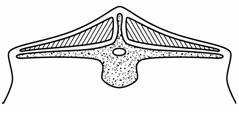
Score 3: Good Skeleton and covering are well balanced
- Spine form a sharp ridge
- Transverse processes are ¼ visible and individual vertebrae can still be identified but only by pressing on them
- Pin bones are rounded and smooth, with a shallow cavity below the tail head and fat cover over whole area, skin smooth, pelvis can be felt
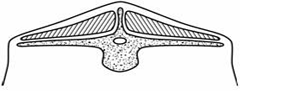
Score 4: Fat There is excess fat covering
- Individual vertebrae cannot be identified
- Transverse processes have a smooth and rounded edge
- Pin bones are covered in fat with a shallow cavity below the tail head and patches of fat evident
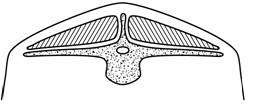
Score 5: Grossly fat or obese
- Spine is covered with fat
- The ridge of transverse processes is barely visible
- Pin bones are completely covered in fat with the cavity filled with fat rolls
- The pelvis is impalpable, even with firm pressure
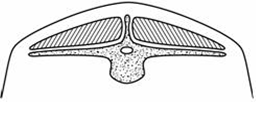
Recommended condition scores
A farmer should target condition scores for cows and heifers are as follows:
| Situation | Cows | Heifers |
| Pre-calving | 2.5-3 | 2.5-3 |
| Pre-service | 2-3 | 2-2.5 |
| Drying off | 2.5-3 | 2.5-3 |
If the average condition score is:
• Within the normal range, the cows are receiving sufficient energy in their ration
• High, there is a risk that feed intake will be depressed at the beginning of the next lactation, so
- Ensure cows are not too fat at the end of the current lactation
- Low, energy intake has been insufficient and resistance to disease could be adversely affected, so increase feed intake and/or energy density of the ration
- Cows should be condition scored repeatedly to assist with feeding decisions. They can be interpreted as follows:
- If the score is within the normal range, then feeding management is correct
- If the score is below the normal range and changes by less than 0.75 points, then feeding management throughout lactation is correct but overall condition can be improved
- If the score decreases by more than 0.75 points during early lactation, then energy intake is too low hence dry cow, transition and early lactation feeding should all be reassessed
- If cows become over fat towards the end of lactation, then the energy: protein balance in the milking ration should be fine-tuned.
Milk production and body condition
Cow body condition has a large effect on milk production and fertility. The cow either stores body fat or mobilizes it, depending on the level and type of feed and the stage of lactation. Adequate body reserves enable high production peaks to be achieved, which contributes to high milk production for the whole lactation.
Body condition in early lactation
Fat cows at calving have an important source of energy at a time when they are trying to achieve peak milk production and their appetites have yet to reach 100%. Cows in higher condition at calving also have better fertility. Cows that are low in body condition at calving and are underfed in early lactation, have their peak milk production depressed and will partition less feed to milk and more towards body condition over the whole lactation. Rapid loss in body condition during early lactation can adversely affect cow performance, through metabolic problems and delayed conception.
Body condition in late lactation and the dry period
Milk production falls in late lactation because:
- Cows are using (partitioning) more of their intake to build body condition rather than to produce milk, their intake ability has decreased or they are being offered less feed or lower quality feed.
- Cows with high genetic production potential tend to continue partitioning nutrients to milk rather than to body condition during late lactation. They must then be fed very well at this time to put on
- body condition ready for their next calving.
- The dry period may be the only opportunity for cows to put on condition. However cows use feed energy more efficiently to put on body condition while still milking compared to when dry.
Lactation Curve

Milk Persistency curve

- 15 L/d peak & 8% persistency(1.2 L/D decline); 2980 L total
- 15 L/d peak & 12% persistency(1.8 L/D decline); 2330 L total
- 20 L/d peak & 8% persistency(1.6 L/D decline); 3970 L total

